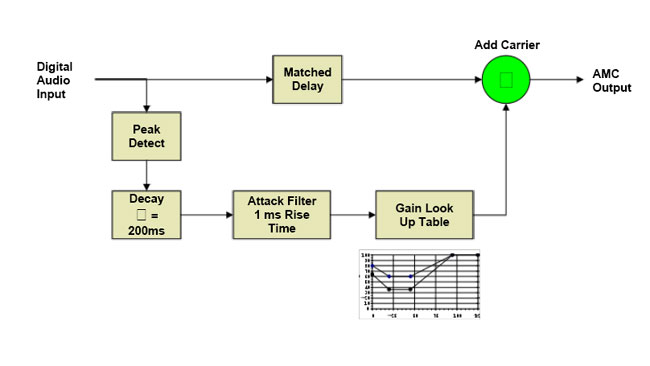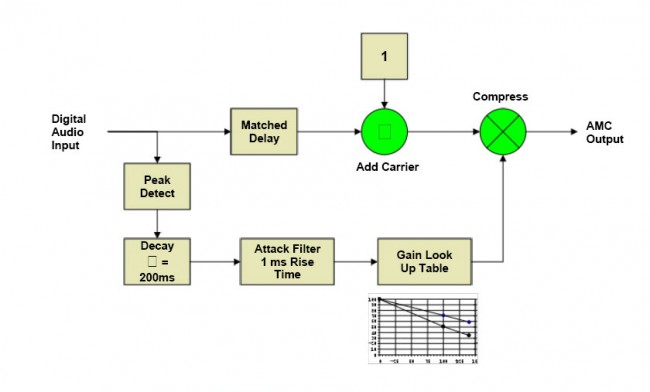Since the FCC waved some of its rules regarding carrier power and carrier shift on the AM broadcast band, AM stations are now able to implement MCDL or DCC (Dynamic Carrier Control) technology to save money on their electric bills. This technology has the potential to save tens of thousands of dollars for higher-powered AM stations (high power=greater than 10 KW carrier level).
On a standard AM broadcasting station, the carrier represents two-thirds of the energy being transmitted, with the modulation index containing the other one-third. The carrier contains no information; it is simply there on the center frequency at the power level authorized by the station’s license. Thus, if the carrier can be reduced without affecting the quality of the broadcast reception, it will reduce to the overall power consumption of the transmitter. In areas where electric costs are high, the savings can be substantial.
There are various ways to accomplish this. The first is called Dynamic Carrier Control (DCC), where the carrier voltage is reduced during moderate modulation levels (between 20-50%) and restored during peaks. This reduces the output power during average modulation, restoring most of it during quiet periods and peaks. The next is Dynamic Amplitude Modulation (DAM), which is similar to DCC. The most savings will be noted with less heavily processed programming such as talk radio because the higher the average modulation density is, the less the MDCL circuit reduces the carrier voltage level. The little graph in the diagram shows the reduction in the carrier voltage vs. modulation levels.

Finally, Amplitude Modulation Companding (AMC) reduces the voltage in both the carrier and modulation product during peaks. This results in better savings for higher-density modulation indexes. It is also the most transparent of the three schemes, as the carrier is restored to full power during periods of low or no modulation levels. During peak modulation, the reduction does not drop the power level below the un-modulated carrier level. The little graph in the diagram shows the reduction in the carrier voltage vs. modulation levels.

Nautel has done extensive work on MDCL and includes several algorithms in their NX series transmitters. For older Nautel transmitter models such as ND, XL, XR, and the J-1000, there is an outboard exciter, which is in a one-rack unit chassis. Older transmitters may need a simple field modification to create a DC-coupled audio input. The cost for the upgrade is approximately $5,000 USD, however, check with the regional Nautel sales rep.
Once the system has been installed, there are several things to be aware of:
- Modulation monitors may not work properly, especially older units, which will show significant carrier shifts and have carrier alarms. Belar AMMA-2 modulation monitor is specifically built to work with MDCL transmitters.
- When making field strength readings, the MDCL circuitry must be turned off to get accurate readings.
- For stations running IBOC, the amount of carrier power reduction may need to be experimented with, as the effect of the carrier reduction may cause the transmitter to exceed the NRSC mask.
Currently, only Nautel and Harris are selling MDCL transmitters. I spent several minutes poking around the Harris website and looking through their product brochures for the DX series transmitters and no mention of DCC o MDCL was found. I’d be happy to include any information from Harris if it were made available.
